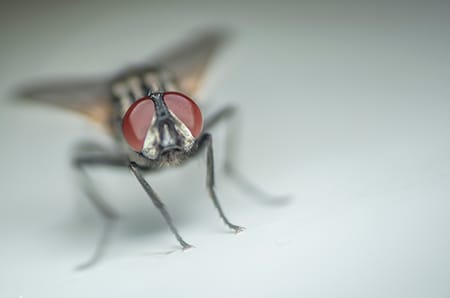Click To Call > (800) 966-7673
Wednesday, August 28, 2019
Filth flies are among the most frustrating pests of food-handling establishments. It’s not hard to understand why when you consider a single fly can grab the attention of everyone in the room and constitute a health concern in the process. To make matters worse, they can find a way in even if they have to wait for a person to open the door. Fortunately, they rarely breed inside. This is not by choice; they require a large amount of organic matter and several weeks to emerge as adults. While references differ, a number of filth flies are said to develop from egg to adult in about one week. This is usually prefaced by the statement “under optimal conditions,” but optimal conditions may be hard to come by. Despite the odds, you will occasionally find filth flies breeding indoors. When this happens, there are several telltale signs.

The first sign may be subtle, depending on air currents, but there will be an odor. Filth flies of every kind rely on odors to guide them to suitable food sources. It is pretty rare to encounter a large odorless mass of decaying organic matter that is teeming with maggots.
The second sign is more noticeable as there will be a sudden mass emergence of flies. One day there will be few flies and the next, there will be dozens. In addition, they will all be the same species. Rarely, there could be a second species. Typically, there are three or four days in a row with dozens of a single species. If there aren’t traps to catch them, the numbers build quickly, as adult flies may live for several weeks.
The most common cause for filth flies breeding indoors is a carcass. If a squirrel or raccoon dies in the attic, mature maggots may enter the living space in search of a place to pupate. Blowflies or flesh flies can quickly find a rodent that has been caught in a trap. Because they are all developing in the same environment, they all pupate and emerge as adults within a day or two of each other. In some conditions, a single mouse on a glue board may not be sufficient to successfully raise a brood of flies to adulthood.
The best approach is to find the source and remove it. Not only do you need to remove the carcass, but you should also take steps to remove the pupae that will become tomorrow’s flies. Sweep up the pupae you can find and use a space treatment to knock down the adults. An ILT in the area also will help eliminate adults as they emerge. It is not recommended to use one of those smelly bag or jar traps indoors, as the traps themselves are often more objectionable than the flies.
Be alert for this scenario so you can act appropriately when the flies appear.
For more information on how to control fly infestations visit our fly pest identification page.
If you have a fly infestation:
This article was initially posted in Pest Control Technology